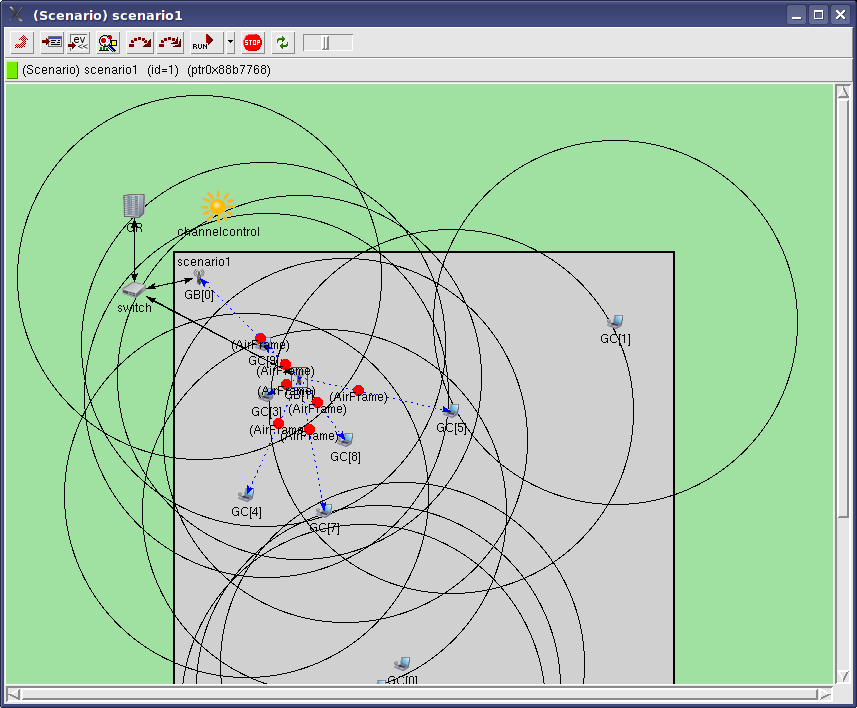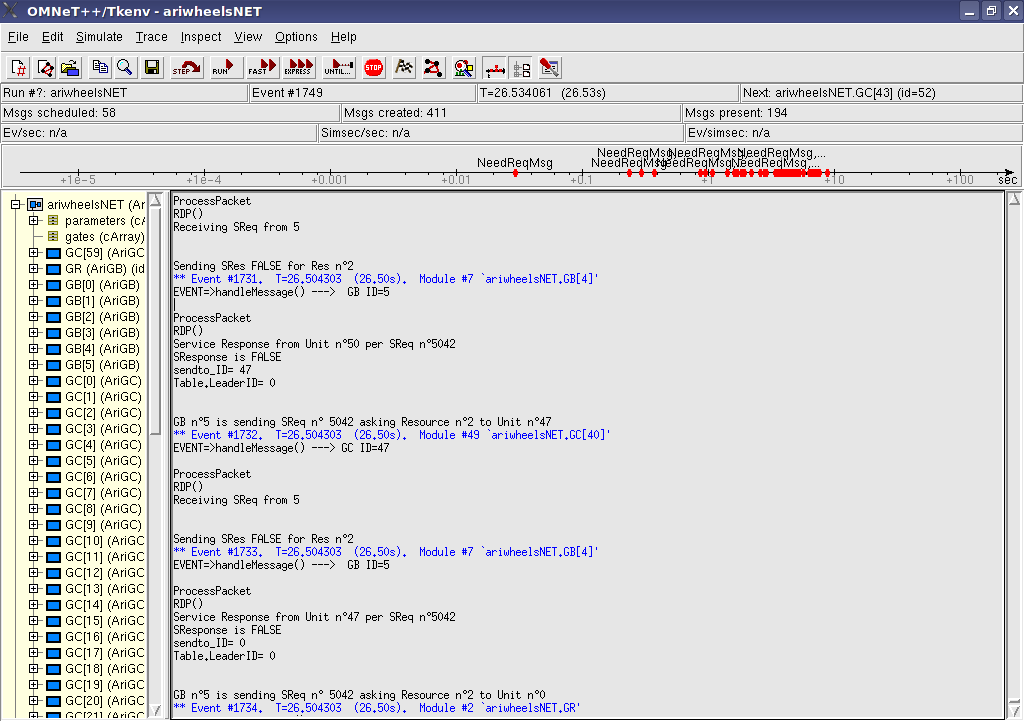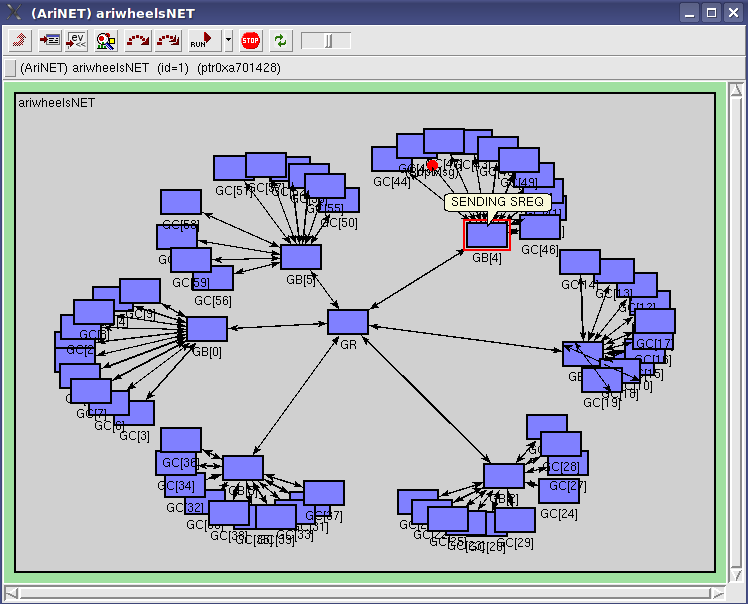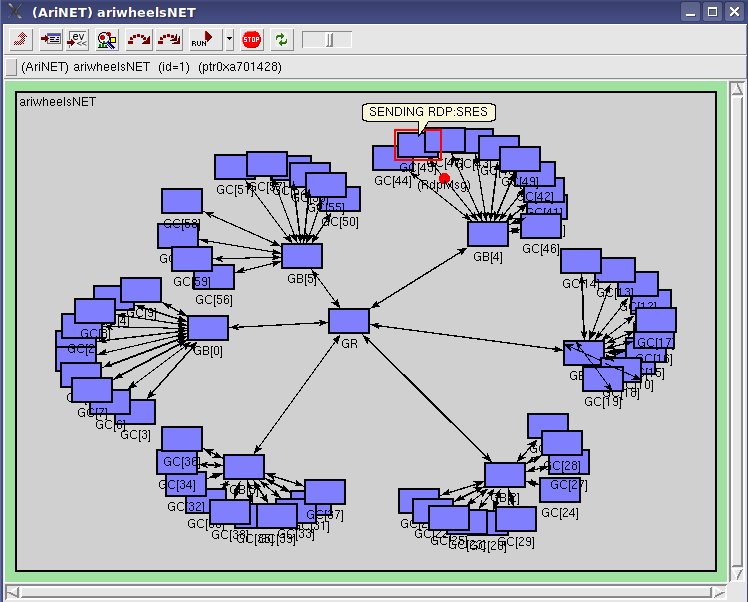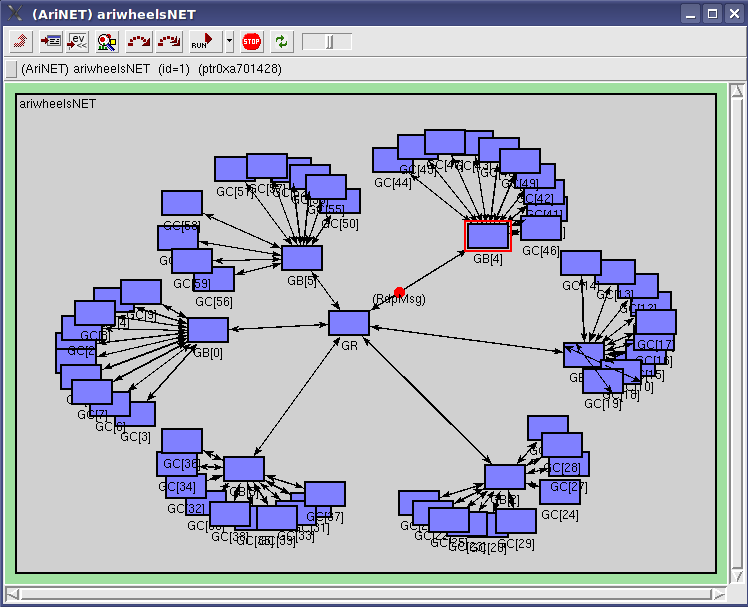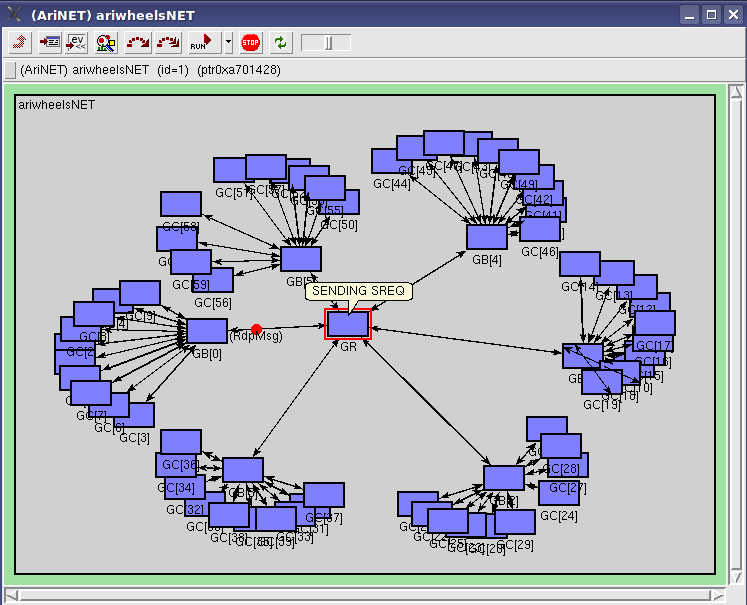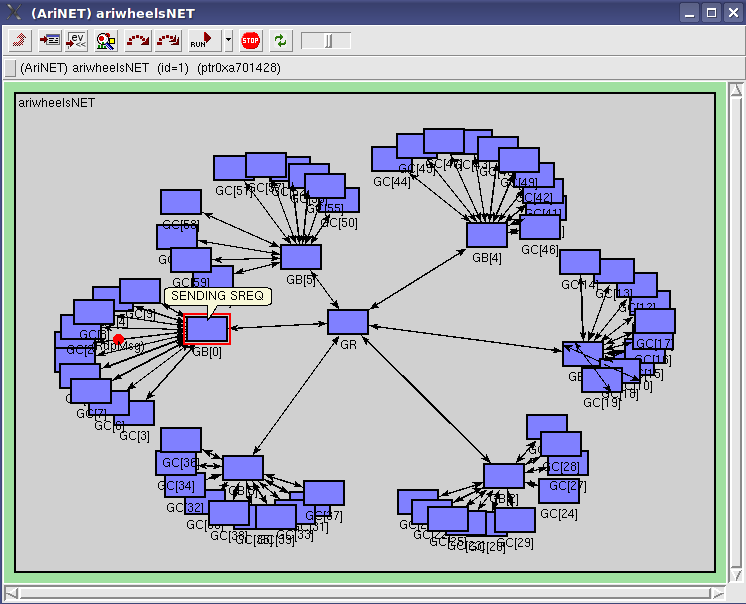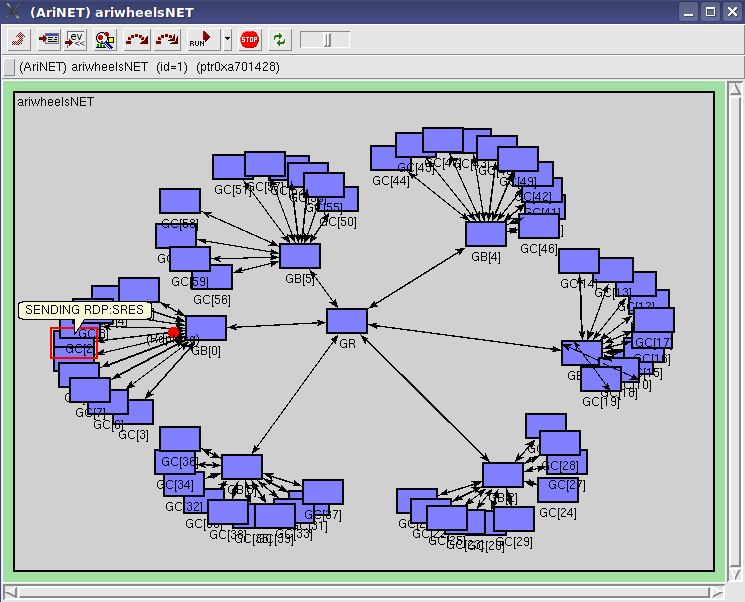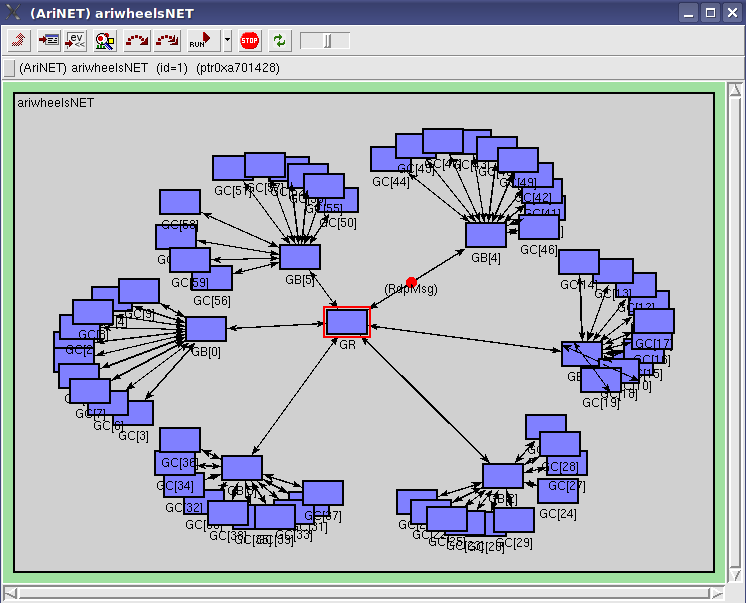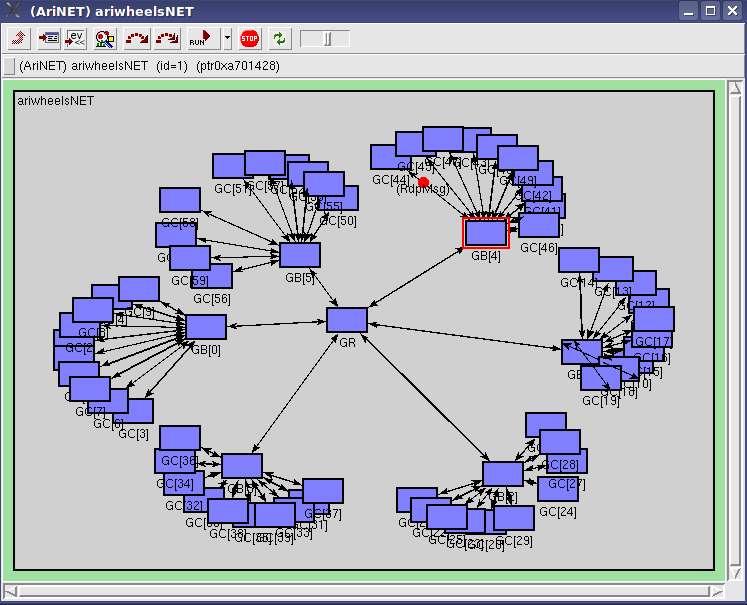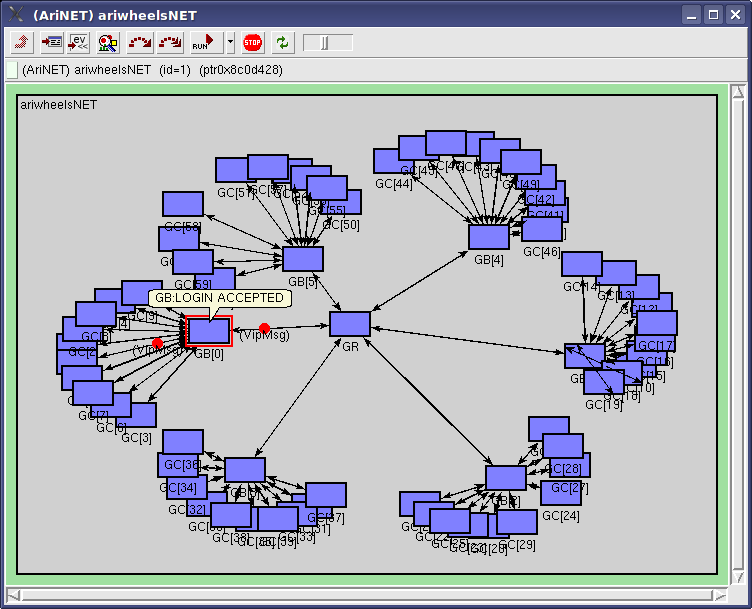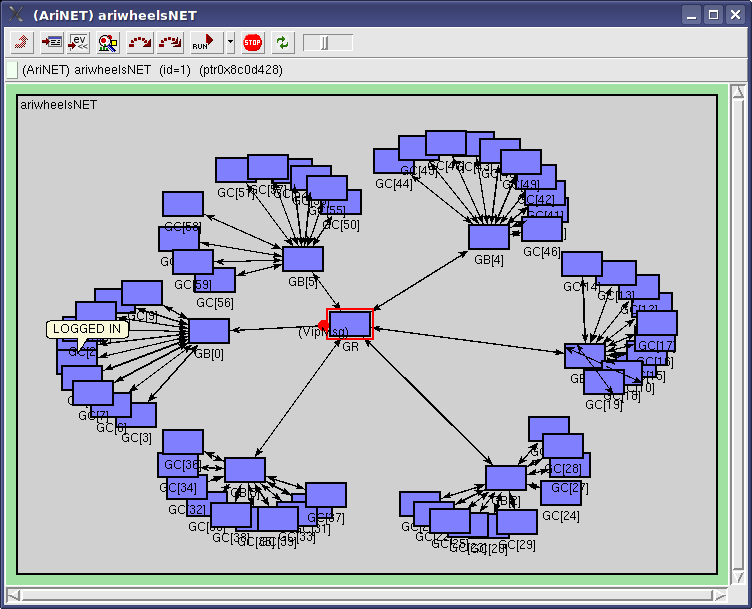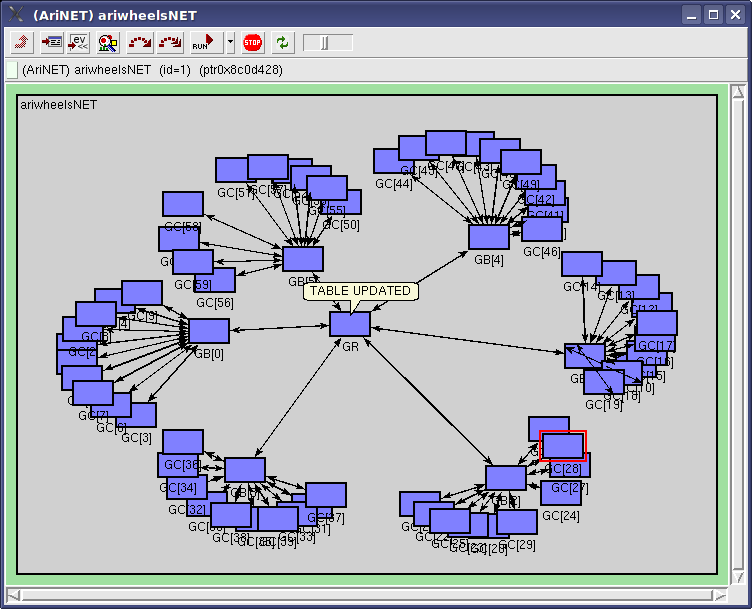 O______
O______Simulation Pics
1. Simulator Capsule
We implemented Ariwheels in the Omnet++ simulator, coding the overlay
part and exploiting the existing wireless underlay network
modules. In the underlay we used IEEE 802.11 at the MAC layer and
the DYMO routing protocol (an AODV-like reactive routing protocol. We
tested the performance of Ariwheels in a vehicular environment. We
used a realistic mobility model generated by VanetMobiSim, whose ouput
(mobility traces) was fed to the Omnet++ simulator. Vehicles
travel in a 1-km-wide city
section over a set of urban roads, which include several road
intersections regulated by traffic lights or stop signs. In
particular, we adopt the IDM-IM microscopic car-following model, which
allows us to reproduce real-world traffic dynamics as queues of
vehicles decelerating and/or coming to a full stop near crowded
intersections. Vehicles enter the city section from one of the border
entry/exit
points, randomly choose another border entry/exit point as their
destination, compute the fastest path to it and then cross the city
section accordingly. A vehicle entering the topology is assigned a
maximum speed of 10 m/s, that it tries to reach and maintain, as long
as traffic conditions and road signs allow it to. When a vehicle
reaches its destination, it stops for a random amount of time,
uniformly distributed between 0 and 60~s, then it re-enters the city
section. The simulated city topology featured 7 bus stops with access
points s, each corresponding to a Broker. Furthermore, 3 buses acting
as mobile Brokers weave their own routes across the topology, among a
population of as many as 85 vehicles acting as mobile Agents. Each bus
carries 10 passengers equipped with mobile Agent capabilities, and it
associates to the Broker with the smallest colony at the time of
departure from the bus station.
